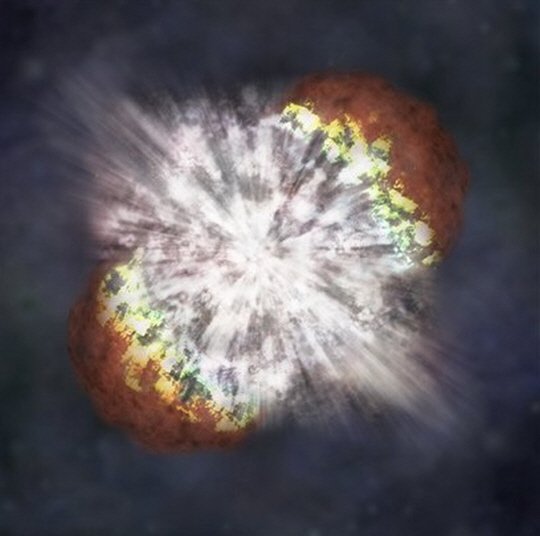MessageToEagle.com – It remains a cosmic mystery. Scientists are still unable to determine the origin of a mysterious energy impact from space.
Some time between AD 774 and AD 775, our planet was hit by an extremely intense burst of high-energy radiation of unknown origin.
Was this peculiar event a result of extraordinary auroras or gigantic solar flares?
The mystery deepens as there are no ancient astronomical records describing this very unusual event. Ufologists are suggesting that the radiation can be explained if the Earth was involved in some kind of cosmic battle. If alien spaceships fired gamma lasers at each other and the battle took place far away, the distance would weaken the radiation.
Scientists detected the mysterious radiation burst when looking at the amounts of the radioactive isotope carbon-14 in tree rings that formed during the AD 775 growing season in the Northern Hemisphere.
The increase in 14C levels is so clear that the scientists, led by Fusa Miyake, a cosmic-ray physicist from Nagoya University in Japan, conclude that the atmospheric level of 14C must have jumped by 1.2% over the course of no longer than a year, about 20 times more than the normal rate of variation.
“The work looks pretty solid,” says Daniel Baker, a space physicist at the University of Colorado’s Laboratory for Atmospheric and Space Physics in Boulder, Colorado. “Some very energetic event occurred in about AD 775.”
Cosmic rays normally account for the steady production of carbon-14 in our atmosphere.

Carbon-14 is mildly radioactive. Sooner or later, the carbon-14 atoms in a dead plant or animal decay away and by measuring the amount of remaining 14C it’s possible to estimate the age of plant and animal up to about 60,000 years old
The big mystery scientists are now trying to solve is to determine where those gamma rays originated.
To our best knowledge, only floods of ?-rays from supernova explosions or proton storms from giant solar flares can produce a 14C spike. But neither seems likely, Miyake says, because each should have been large enough to have had other effects that would have been observed at the time.
A massive supernova, for example, should have been bright enough to produce a ‘new’ star visible even in the daytime, as was the case for two known supernovae in AD 1006 and AD 1054. Such an explosion would have needed to be brighter than either of these, Miyake says, because those events were not large enough to leave traces in the 14C record.
One possibility is that ancient astronomers did not record the event because it occurred in the far southern skies, which was the reason why they couldn’t see it. However, if it did happen, today’s X-ray and radio astronomers should have found signs of a “tremendously bright” remnant of the explosion, Miyake point out.
As for solar flares, he says, anything that could have produced the required amount of super-high-energy protons would have vastly exceeded the most intense solar outburst ever recorded. In addition, such a gigantic flare would probably have destroyed the ozone layer, with devastating ecological consequences.
Daniel Baker believes it is too early to dismiss solar flares as these are sometimes associated with coronal mass ejections (CMEs) – huge eruptions of magnetically charged plasma from the Sun’s atmosphere that send streams of charged particles towards Earth.
It might be possible, he says, for CMEs to be accompanied by conditions in which an unusual number of protons are accelerated to super-high energies, even without the flare itself being “ridiculously strong”.
“We know much more these days about how important proton acceleration is at the shock fronts that precede CME structures as they propagate towards Earth,” Baker says. “I would like to think about whether a strong CME moving directly towards Earth could have produced the intense proton population that impacted Earth’s atmosphere.”
“It would be fascinating,” Baker adds, “if there were some record in China or in the Middle East that reported powerful aurora or some other such event” around the same time as the observed 14C increase.
Was a massive supernova, or giant solar flare responsible for the radiation burst that took place over 1200 years ago? We do not know.
“With our present knowledge, we cannot specify the cause of this event.
However, we can say that an extremely energetic event occurred around our space environment in AD 775, but neither a solar flare nor a local supernova is likely to have been responsible,” Miyake admits.
Perhaps it was caused by something scientists have not yet considered, or maybe we speculating about an event that took place on Earth rather than in space, or maybe there were Star Wars in the Middle Ages…
© MessageToEagle.com






